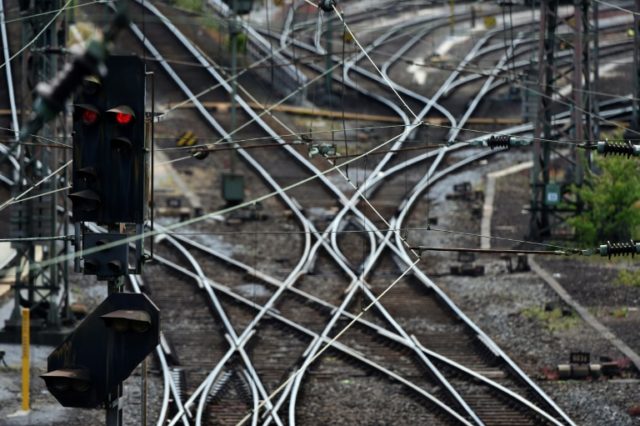Berlin (AFP) – Away from the sleek bodies of the high-speed trains feted as Alstom and Siemens merge their rail operations, the deal will also create a less glamorous but highly-profitable railway signalling giant.
Alstom’s Train a Grande Vitesse (TGV) and Siemens’ InterCity Express (ICE) are the flagships of the French and German railway fleets — and among the innumerable squadrons of trains and trams turned out by the two firms’ factories.
But signalling — the subtle, hidden art of channelling hundreds of tonnes of rushing metal safely from A to B — is “a high-growth area” that has “contributed significantly to the value” banks have placed on the two firms, a European rail industry expert who asked not to be named told AFP.
Once combined, Siemens and Alstom will control 30-34 percent of the global signalling market, far ahead of the 20 percent held by China’s CRSC, according to figures from France’s FIF rail industry federation and German consultancy SCI Verkehr.
Munich-based Siemens gobbled up Britain’s Invensys in 2013 to become the market leader, while Alstom bought General Electric’s signalling business in 2014.
In rolling stock, by contrast, even the Franco-German tie-up will remain smaller than China-based behemoth CRRC.
The difference between signals and rolling stock production is stark.
Construction of wagons and locomotives requires major investments into huge factories, which have been plagued by overcapacity for several years.
Signalling, meanwhile, is the work of small, mobile groups of engineers.
The technology is critical to rail manufacturers in two ways: it makes train travel safe and allows operators to run train or underground services more frequently, helping to serve the world’s increasingly dense urban landscapes.
And the power to squeeze more out of existing track comes at a price, with signalling firms often boasting profit margins in the double digits.
– Emerging markets goldrush –
Just like modern trains, today’s signalling has progressed far beyond its origins.
The future Siemens-Alstom plans to integrate the business into the dense web of services and technologies linked to rail that it dubs “mobility solutions,” ranging from automating away the driver to traffic scheduling.
A recent study from European rail federation Unife forecasts the market for such offerings will grow 2.9 percent per year between 2019 and 2021, compared with 1.9 percent annually for rolling stock.
In 2016, Alstom scored a 15-million-euro contract to install signals on the Qinghai-Tibet line in western China.
The French firm’s local joint venture is involved — often a necessary condition of setting up shop in China — but non-Chinese companies would likely have been shut out altogether from a contract for rolling stock.
For its part, Siemens has secured a niche in the epic scheme for a metro system in Saudi capital Riyadh, supplying 67 trains specially adapted for the heat on top of signalling, electrification and automated driving on two lines.
Such lucrative “turnkey” deals are frequent in emerging countries looking to splash out on infrastructure.
“Urban growth and major modernisations in Asia, South America and soon Africa” mean Siemens and Alstom should be able to tap into “very diverse markets,” the industry expert told AFP, as nations on the rise rush to ride the rails.

COMMENTS
Please let us know if you're having issues with commenting.